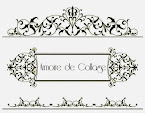Tuesday, January 31, 2012
Black is Beautiful
To commemorate Black History Month this February, black jewelry is being showcased as it experiences a revival in popularity. They say what goes around, comes around. The new black is actually a take-off of the old black, as in antique black ‘jet’ jewelry, introduced by Queen Victoria when donning ‘mourning dress’ after the death of Prince Albert. The Queen didn’t have to import her jewelry as she had her own raw material supply in nearby Whitby, England.
The word "jet" is a noun derived from the French word for the same material, jaiet. It has an organic origin, deriving from decaying wood subjected to millions of years of high pressure decomposition. Commonly from the wood of trees of the Araucariaceae family, jet is considered a minor gemstone. The jet mined at Whitby, England, is of the early Jurassic age, dating back approximately 182 million years ago. Found in two forms, hard and soft, hard jet is the result of the carbon compression and salt water; soft jet is the result of the carbon compression and fresh water. It is also referred to as black amber, often inducing an electrical charge when rubbed, like that of amber.
Although traditionally used by monks for rosaries, England’s fascination with the mineral popularized by the Queen, caught on in the United States and became all the rage during the Roaring Twenties with the ‘flappers’ who wore jet beads in long strands. Although easy to carve, jet is subject to breaking. Eventually black glass crystals were substituted for ‘the look,’ making mass production possible and more affordable for the masses. When polished, it’s difficult to tell the difference, but black glass will be cool to the touch; due to its thermal conductivity, jet is not. Often imitated by hard coal and vulcanite (hardened rubber), both are more difficult to distinguish from real jet. When rubbed against unglazed porcelain, true jet will leave a chocolate brown streak. This juxtaposition of taking a crude, fossilized material and fashioning it into beautiful jewelry is one more example of man’s ability to make a silk purse out of a sow’s ear.
But the jewelry that most beautifully depicts the ethnicity of the Black race is the Blackamoor jewelry. Blackamoor is the head or bust of a young male or female black African depicted in jewelry. The head is typically carved of black chalcedony hardstone or ebony, in three dimension. The busts and headdresses are usually completed in gold and may be gem set, depicting images of Carnivale and the exotic East. Blackamoors date from the mid 19th to the mid 20th centuries, but are still produced today in Venice by both the iconic Nardi firm, famous for gem-set Blackamoors (circa 1950), and Giorgio Berto’s Dogale Jewelry. Costume jewelry in the style of Blackamoors is usually made with a resin.
Black jewelry was popularized again in the mid-20th century, and just a little over a half-century later, is in vogue once again. Vintage costume jewelry collectors won’t have difficulty telling the difference from the antique, the vintage, and the new. The jewelry findings (hardware) and construction are tell-tale signs. There’s an obvious difference in the craftsmanship of the Victorian jewelry. The mid-20th century black glass jewelry is more robust than the new or it wouldn’t still around over a half-century later. It’s called ‘planned obsolescence.’ Fashion trends change frequently to encourage commerce, so there’s no need to make the jewelry last. Look for your great grandmother’s jet jewelry at antique malls, your grandmother’s black crystal jewelry (1950s) in her jewelry box, and the new jewelry in the landfill next year.
Sources: Wikipedia, and Jeanne Bell’s
Photo by Janet Werner
Photo insert from Internet source Schwarzer Trauerschmuck, photographed by Detlef Thomas
Labels:
antique,
antiques,
Black,
Blackamoor,
collectibles,
jet,
jewelry,
vintage
Subscribe to:
Post Comments (Atom)




Surprisingly...after the article “Black is Beautiful” was written for the February issue of the Antiques & Collector’s Guide, a Nardi Veneitan blackamoor or “moretto,” as they are also referred to, was featured on the Antiques Roadshow on Feb. 6th. To view more about these magnificent works of art go to http://www.nardi-venezia.com/en/dettaglio-categoria-gioielli-46-The-original-Nardi-Blackamoors.html
ReplyDeleteAlso see the Spring Antique Mall website at www.springantiquemall.com